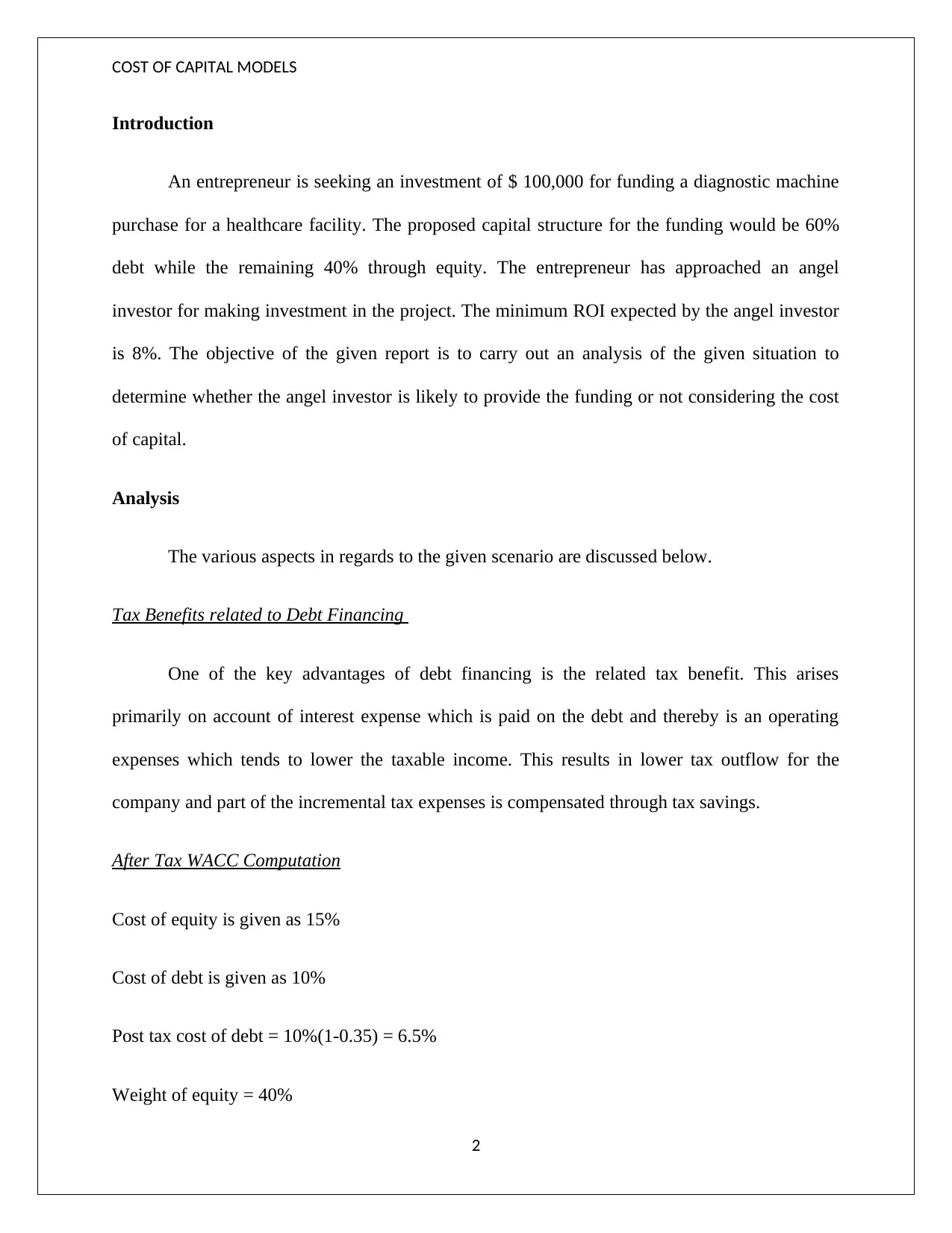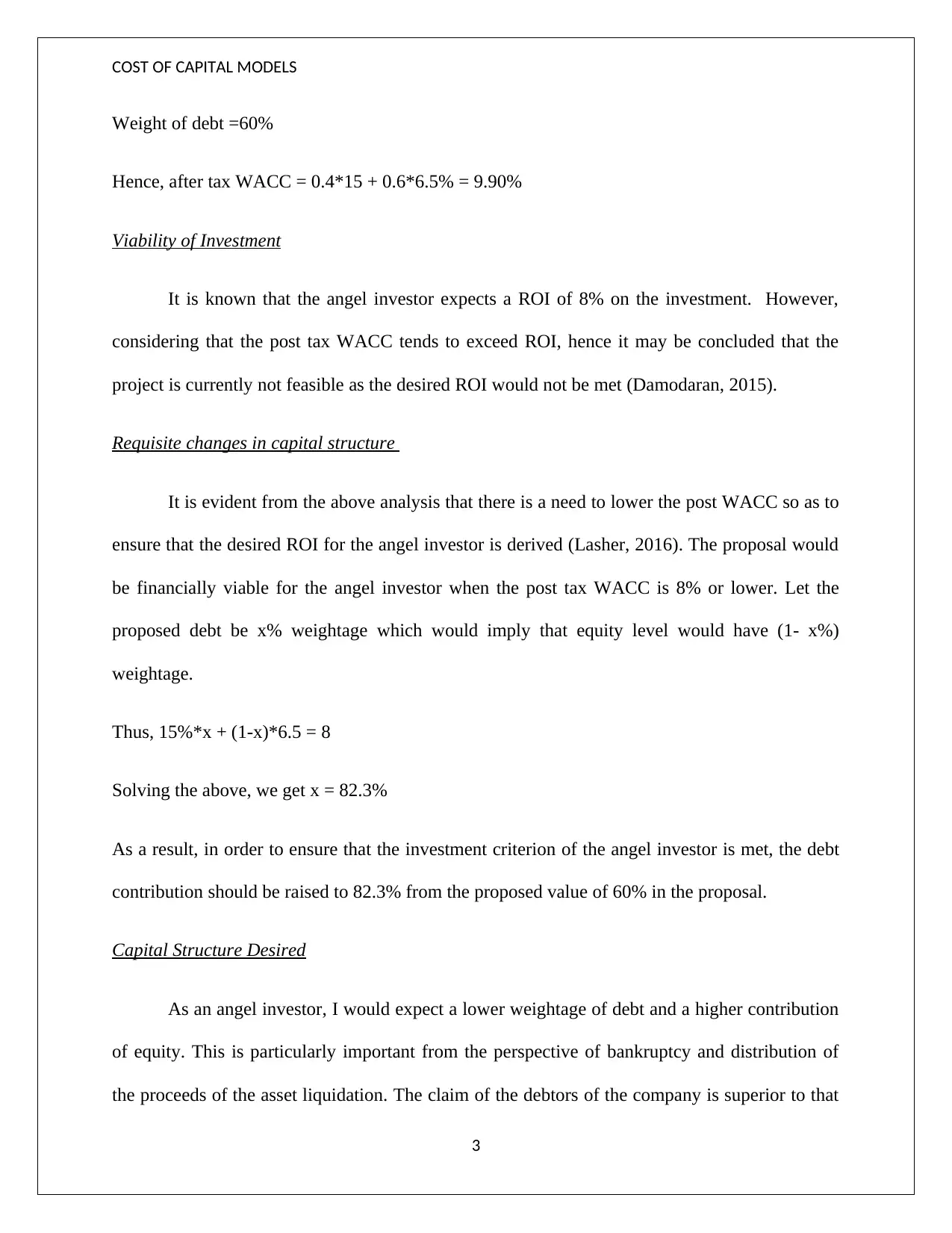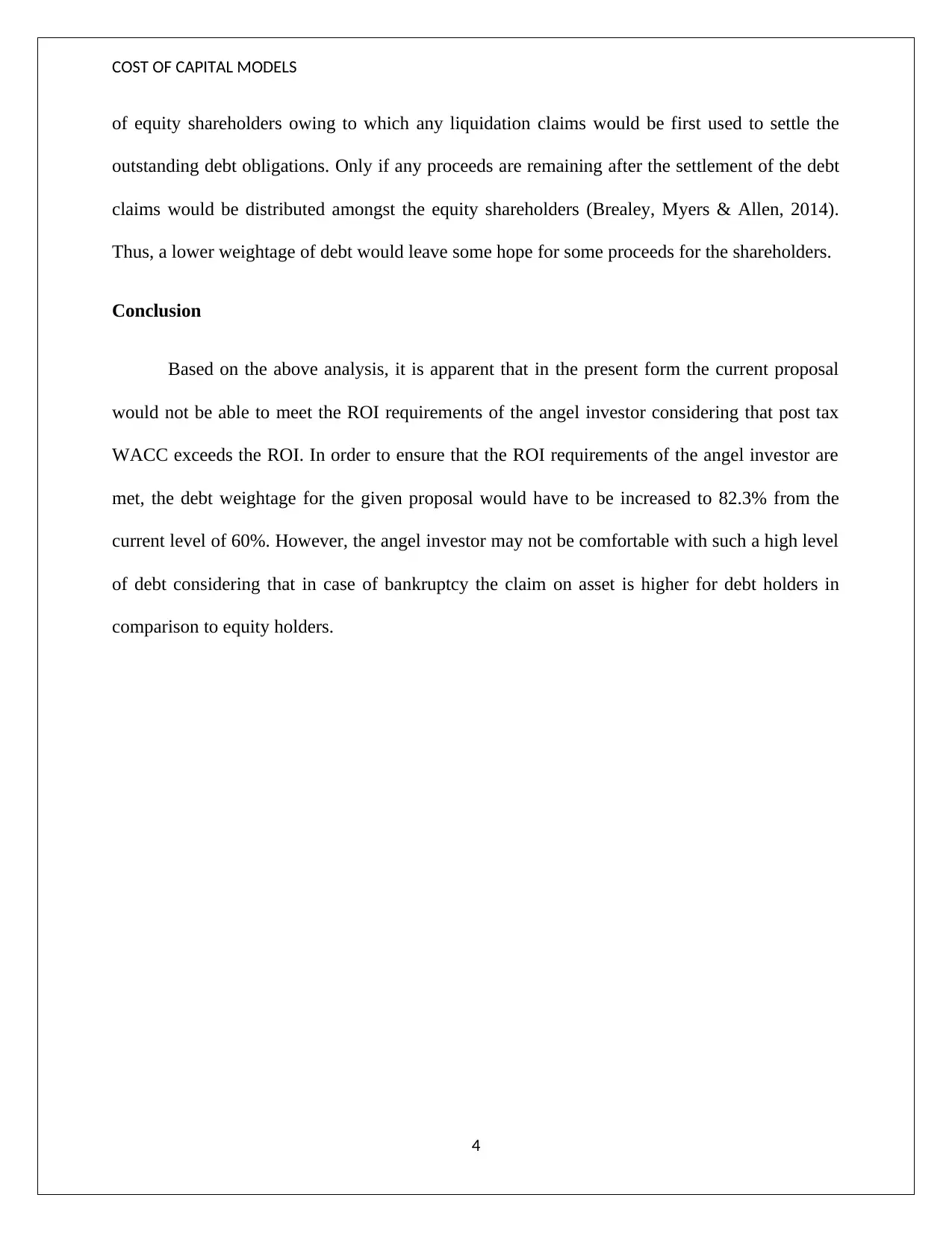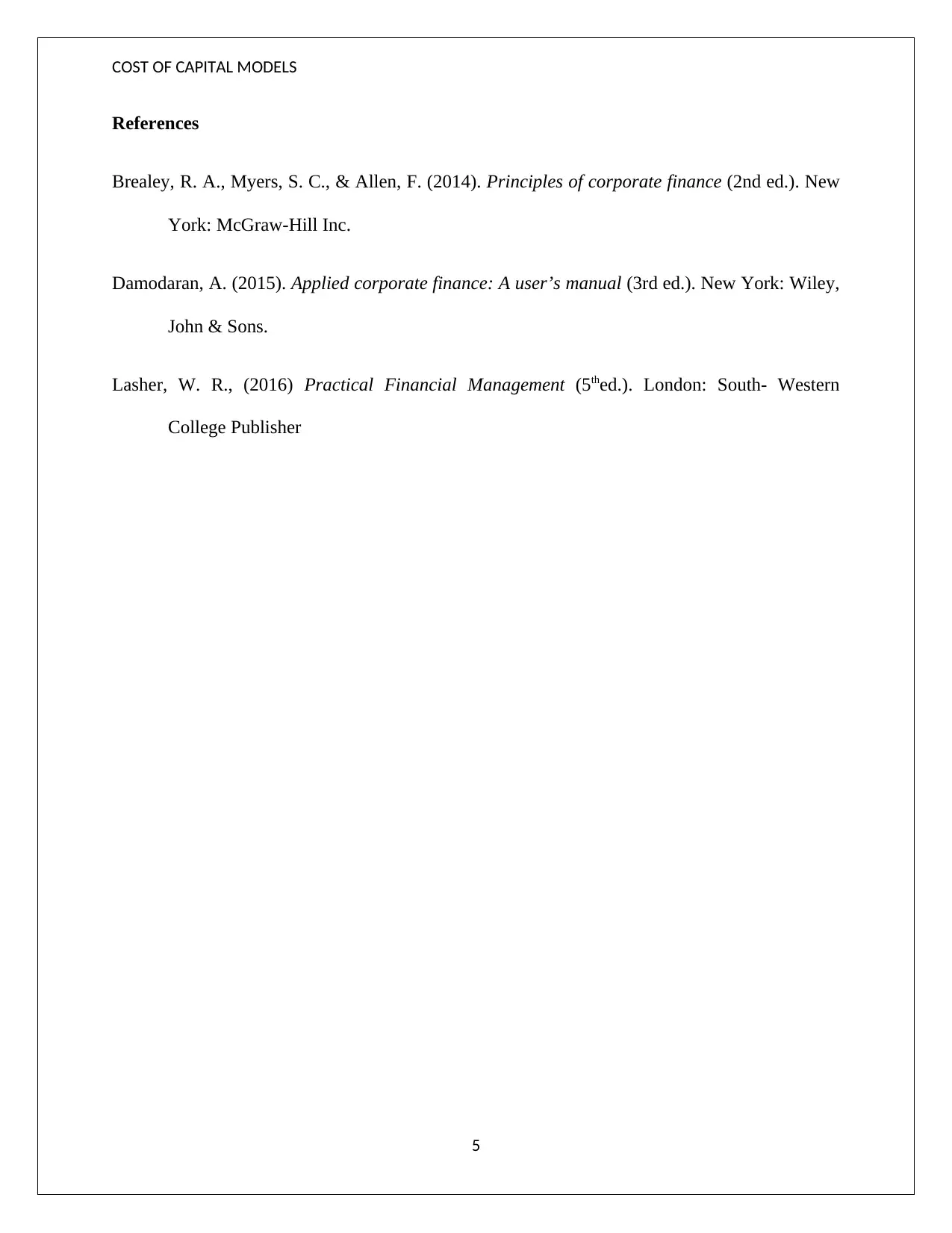Cost of Capital Models: The Angel Investor - Finance Report
VerifiedAdded on 2023/01/20
|5
|814
|45
Report
AI Summary
This report analyzes an angel investor's decision to fund a diagnostic machine purchase for a healthcare facility. The analysis focuses on the cost of capital, specifically the Weighted Average Cost of Capital (WACC), considering a capital structure of 60% debt and 40% equity. The report calculates the after-tax WACC and compares it to the angel investor's required Return on Investment (ROI) of 8%. The findings indicate that the initial proposal is not viable because the WACC exceeds the ROI. The report then explores potential changes in the capital structure to meet the investor's ROI requirements. The report concludes with a discussion on the angel investor's preference for a lower debt weightage to mitigate risks associated with bankruptcy and asset liquidation, emphasizing the importance of equity in securing potential proceeds for shareholders. The report references key financial management concepts and provides a comprehensive analysis of the investment scenario.
1 out of 5












![[object Object]](/_next/static/media/star-bottom.7253800d.svg)